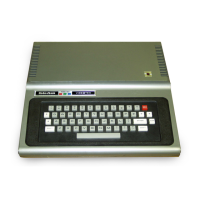Experiment
#6
Changing Line Numbers
Delete the previous program from working memory with the NEW command.
The following program allows
an
arbitrary list
of
numbers to be entered from the
keyboard. When a zero in entered, the average
of
the non-zero numbers
is
computed
and displayed. (At least that is what the program should do.)
Type the program exactly
as
it is listed:
10
INPUT
"NUMBER";
N
20
CT
=
CT
+ 1
30
AI) =
Al,l
+ N
40
IF
N=0
THEN
GDTO
80
50
GOTO
10
80
PRINT
"At,lERAGE
IS";
AI)/CT
The program accumulates the sum
of
the numbers in the variable AV. The variable
CT
is
a counter that records the number
of
values entered.
If
the number entered
is
@,
then the average
is
printed in line
6@.
Here
is
an
example
of
the execution
of
the program:
NUMr.ER?
'i-
NUMBt::rp
~2
NUMBE:F~?
el
AVE
H/7iGE
IS
:2
Ok
Obviously, the program
is
not working correctly. The average
of
the two numbers is
3, not 2. The reason for the inaccuracy is that the number
0 was counted by the
variable CT.
The program can
be
correcled by inlerchanging lines 20 and 40. In this way, the
check for a zero value for N is done before the number N
is
counted. One way
of
changing the order
of
the statements
is
to retype the two lines. However,
an
easier
method
is
to
use the Editor
to
change the line numbers.
Use the command
ED
I T
(ENTER)
to enter the Edit Mode.
78

